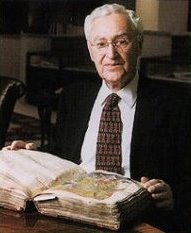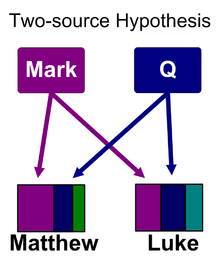
Pastor Rich Knight
Central Congregational Church
May 13, 2018
Our theme this morning is this: Can you trust the Gospels? Are they reliable?
You’ve probably seen some documentaries on the Discovery Channel or the History Channel, and you know there’s lots of speculation being thrown around and there has been for years. I believe it’s an important issue because people use it as an excuse to not go deeper in their faith. “Well, how can you even trust the Bible says?” “Why should I commit my life to Christ when you can’t even be sure if there was a Jesus or if there was that he even said these things?”
We all want to know that our faith rests on a firm foundation, don’t we?
There are Roman writings and Jewish writings that tell us of a Jesus of Nazareth who was an esteemed teacher and healer, and was tragically killed and who some say was raised. Tacitus, Pliny, Suetonius, and Josephus the Jewish historian all wrote about Jesus.
But our focus this morning is: are the Gospel documents reliable? Matthew, Mark, Luke and John. Can you trust that they give us an accurate record of the teachings, life, death & resurrection of Christ?
By the way, I feel that I owe you this message, in order to balance out some other things I’ve said about the Bible, especially some Old Testament stories.
I’ve talked about Genesis 1 being poetry, not science.
I’ve mentioned that most scholars view the Adam & Eve story found Gen. 2 & 3, as a parable. Same w Noah’s ark.
Job is written entirely in poetry, which means it’s a piece of inspired literature, perhaps historical fiction.
I’ve tried to share what faith-filled scholars believe today. Today as we tackle the Gospels, you’ll hear very different conclusions. These conclusions are based on the New Testament itself as well as the teachings of one of the most important and influential scholars in the past 75 years.
Let’s take a look at four passages from the New Testament that are very revealing about the origins of the material presented. II Peter and I John are not gospels, but they speak to authorship & origins of NT books.
Luke 1:1-4 Since jordan 1 mid linen many have undertaken to set down an orderly account of the events that have been fulfilled among us, just as they were handed on to us by those who from the beginning were eyewitnesses and servants of the word, I too decided, after investigating everything carefully from the very first, to write an orderly account for you, most excellent Theophilus, so that you may know the truth concerning the things about which you have been instructed.
John 21:24-25 This is the disciple who is testifying to these things and has written them, and we know that his testimony is true. But there are also many other things that Jesus did; if every one of them were written down, I suppose that the world itself could not contain the books that would be written.
II Peter 1:16-19 For we did not follow cleverly devised myths when we made known to you the power and coming of our Lord Jesus Christ, but we had been eyewitnesses of his majesty. For he received honor and glory from God the Father when that voice was conveyed to him by the Majestic Glory, saying, “This is my Son, my Beloved, with whom I am well pleased.” We ourselves heard this voice come from heaven, while we were with him on the holy mountain.
I John 1:1-4 We declare to you what was from the beginning, what we have heard, what we have seen with our eyes, what we have looked at and touched with our hands, concerning the word of life— this life was revealed, and we have seen it and testify to it, and declare to you the eternal life that was with the Father and was revealed to us— we declare to you what we have seen and heard so that you also may have fellowship with us; and truly our fellowship is with the Father and with his Son Jesus Christ. We are writing these things so that our joy may be complete.
Are the Gospels reliable? Are they accurate? Are they trustworthy?
They certainly claim to be. Luke says wants us to know the truth – the truth about Christ. He wants us to know the truth “about which you have been instructed.” He researched carefully including eyewitness testimony, so that we might know the truth. He wants us to know that it’s true.
The writer of John’s Gospel also wants us to know that it’s true – “this is the disciple who wrote these things down and testifies to them. And we know that his testimony is true.”
In II Peter 1, Peter reminds us that he was one of the original 12 disciples, and that he was there on the Mount of Transfiguration when God the Father said to God the Son, “This is my Son, my Beloved, with whom I am well pleased.” Peter says, “We ourselves heard this voice . . . we were with him.”
In I John, John wants us to share in his fellowship with God and make his joy overflow to us by believing. He says, these teaching about Jesus are not hear-say. He saying, “I’m only telling you what I heard and saw.” “What
we have heard, what our eyes have seen, what we have looked at and touched.” John wants us to know that it’s true.
The Gospels have come under attack in recent years. Much of it came from Dan Brown’s best seller, The Da Vinci Code, a wonderfully written and thoroughly entertaining book, and quite intellectually dishonest. Rarely have I loved & hated a book more! Brown wrote the book with an air of academia. One of the earliest pages says, “All the descriptions of ancient documents in this book are true.” But they’re not! Brown is dishonest when it comes to the New Testament as well as regarding early church history, just to make his story work.

For instance, Brown makes the claim that there was a conspiracy regarding the selection of the books of the NT. He says the issue wasn’t decided until the 4th C. Yet, we have writings from the mid-2nd C. that present the list of the NT books almost identical as we have them today – 27 out of 29 books.
I once told you about a guy named Marcion, who said that Christians didn’t need the Old Testament. He actually produced his own canon – 144 AD. It had the Gospel of Luke and the letters of Paul. But folks told him he was wrong not only because he left out the OT, but also because he left out Matt. Mark & John.
The thing I found most offensive about The Da Vinci Code was how he made the early church leaders out to look like power-hungry, highly political people. And he played off of the Catholic Church scandals with Bishops who didn’t do their job. The earliest Christian leaders and Bishops were not powerful people. Many of them were persecuted and many were martyred. For the first 300 years Christianity was not a powerful religion of the masses. It was a struggling, often persecuted movement. So to describe the formation of the NT like power-hungry politicians trying to put forth their own agenda, is just absolutely false and insulting to the martyrs of our faith.
Another challenge to the faith in recent years has been what are called the Gnostic Gospels – other so-called gospels because they use the word gospel in the title. But they were written much later than our 4 gospels, which were written somewhere between 55-70 for Matthew, Mark & Luke, and 60-90 for John. And the Gnostic gospels are very different.

The Gospel of Thomas contains 114 sayings attributed to Jesus. My favorite professor in seminary, the late Dr. Bruce Metzger translated the Gospel of Thomas into English. So he was one scholar very familiar with its content. Dr. Metzger writes that the Gospel of Thomas did not make it into the New Testament for obvious reasons.
1. It was written in 140 AD. That’s some 50-100 years after the four gospels. Most of the other Gnostic “gospels” were written much later – 3rd & 4th centuries.
2. It did not have a connection to an Apostle, called “Apostolic Authority.” The Gospel of Thomas was written long after the last apostle died.
3. It contains pantheism – the notion that God is not a distinct personality or being, but just part of nature. This is contrary to Old and New Testament teaching.
4. The Gospel of Thomas also ends with these words: “Let Mary go away from us, because women are not worthy of life.” Jesus is also quoted as saying, “Lo, I shall lead her in order to make her a male, so that she too may become a living spirit, resembling you males.” As Dr. Metzger says, “This is certainly not the Jesus we know from the four canonical gospels.”
Lee Strobel in The Case for Christ: “The Gospel of Thomas excluded itself! It did not harmonize with other testimony about Jesus that early Christians accepted as trustworthy.” In the Gnostic Gospels salvation is by some “secret knowledge” and not by the death and resurrection of Christ as the New Testament claims.
Next, let’s look at a hand-out that comes from two lectures given by Dr. Bruce Metzger.
Dr. Metzger spent his teaching career (46 yrs), not at a fundamentalist Bible college but rather at Princeton Theological Seminary. Princeton had a slogan a few years ago: “Where believers are scholars and scholars are believers.” No one exemplified that better than Bruce Metzger. We used to say, you can skip your morning devotions on the days you have Dr. Metzger’s class, because his opening prayers will take you right to the throne of heaven.

In 1952 Bruce Metzger worked on the Revised Standard Version, an assignment only given to top scholars in the field. This version of the Bible was the most highly regarded in Protestant Churches for 4 decades.
In 1989 Dr. Metzger was still the top New Testament Scholar in the English-speaking work, and so he chaired the update on the RSV Bible, the NRSV, the Bibles we have in our pews. Dr. Metzger wrote the introduction on behalf of the Translation committee. You know you’re having a good career when you’re writing the Introduction to the Bible!
Here is Dr. Metzger’s teachings on today’s topic:
How the Gospels Came to Be
Jesus’ Teaching Methods
Jesus’ words were spoken to be remembered! He utilized:
Picturesque speech – spec & log in eye
Puns – Petros & Petra, Peter & Rock, “The Wind/Spirit blows where it wishes.”
Proverbs – “Judge not, lest you too be judged,” “Do not throw pearls nike ja 1 scratch before swine.”
Poetry – Luke 6:27-28, Mark 8:35, Luke 17:26
Parables – the most striking feature of his teaching
All of the above would assist the disciples in remembering his teachings, especially when you consider that Jesus repeated himself on a number of occasions. Repetition promotes retention. For example, Matthew 5-7 gives us The Sermon on the Mount, where Jesus goes up on the mountain to give the teaching. Luke 11ff gives us the same teaching material but says that Jesus was on a level plain when he gave that teaching (“The Sermon on the Plain”). Same material, two different occasions. Keep in mind that the disciples traveled with Jesus from town to town for three years, listening to him teach. Think about how many times they must have heard The Prodigal Son Story! (“Oh, not again!”)
The Jesus Tradition: That which was “handed down” and spread “into all the world”
Ancient disciples memorized their rabbi’s teaching
Disciples had to fully understand their rabbi’s teaching (Jesus gave the disciples on-the-job training when he sent them out 2 by 2 to preach the Good News – Mark 6, Luke 10. What were they teaching? His material! They could then come back and say, “Lord, I think I messed up the ending to the Prodigal Son. Would you go over that again please?”)
Accurate transmission was the standard
Written material (since lost) existed before the Gospels were written
Stories & teachings were preserved for their relevance in the Early Church
Stories & teachings were used as Early Church sermon material
The Gospels
John and Matthew were eyewitnesses. John 21:24
Mark records Peter’s account.
Luke, not an eyewitness, researches his account. Luke 1
The Synoptics (“seeing together”) – Matthew, Mark, Luke
The current theory is that Mark’s Gospel was written first. Matthew & Luke apparently had Mark in front of them when they wrote their gospels because they incorporated much of Mark. Out of the 666 verses of Mark, 600 of them are found in Matthew, 350 are found in Luke.
Matthew and Luke also used an “unknown source” called, “Q” by scholars. These 200 verses are found in almost identical form in Matthew and Luke, but not in Mark. They contain some of Jesus’ most famous teachings – the
Sermon on the Mount, the Lord’s Prayer, and many of the parables.

Are the Gospel Documents Reliable?
10 Reasons to Say “Yes”
- The Rabbinical Method of Teaching was thorough and intense. Jewish Rabbis made their disciples memorize & understand their teachings verbatim. Jesus stands firmly within this tradition. They called him “Rabbi.”
- Eyewitnesses were still living as the documents were being written and
circulated. They would have strongly objected to false material. (I Cor. 15:6) - The willingness of the disciples to undergo persecution and martyrdom
shows their belief in the truthfulness of what they were reporting. - The writers of the NT resisted the temptation to change embarrassing
statements. This shows their commitment to accuracy.
Mark 9:1 “some will not pass away before the Kingdom comes in power.”
Matthew 1 This genealogy is not correct. Someone could have corrected it. - They preserved words they could not begin to understand. Jesus’ treatment of women & children was not comprehended by the early church, yet they recorded his words. – Ex. Jesus said we must become like a child.
Paul says don’t be like little children. Ancient culture ignored children as unimportant. - They preserved things that at the time of writing were no longer applicable to the early church.
– Ex. Question about the Temple Tax – Matt. 17:24
– Ex. Jesus’ instruction the disciples not to go to the Gentiles – Matt. 10:5 - The writers could have written answers into the mouth of Jesus to problems they were facing in the early church. But they did not.
- The Gospel writers could have written some of Paul’s memorable sayings back into the words of Jesus. But they did not.
- On the job training. During his time with them Jesus, “sent them out to preach the kingdom of God and to heal the sick” (Luke 9:2). What were theyteaching? His material, his Good News. Teaching it to others helped the
disciples thoroughly learn Christ’s teachings. - Jesus’ teaching methods made it easy to remember what he said.
The material above comes from lectures given by Dr. Bruce M. Metzger,
Professor of New Testament, Princeton Theological Seminary,
Chair of the Committee of Translators for the NRSV Bible.Let me close with two quotes that I hope sum up this message effectively.
The first is a from a Swedish scholar named Birger Gerhardsson in his book, The Origins of the Gospel Traditions.
“I hope that I have been able to point to reasons for the viewpoint that
in the Gospels we hear not only a whisper of the voice of Jesus, but are
confronted with faithfully preserved words from the mouth of Jesus and
reports which in the end go back to those who were with Jesus during his
ministry Nike Vomero 18 Review: Bigger is Better - Nike Air Max 95 Cuban Link velvet brown UK 5 - Cheap Fenua-environnement Jordan Outlet in Galilee and Jerusalem.”
And finally back to Dr. Metzger . . . .
Lee Strobel interviewed Bruce Metzger for Strobel’s book, The Case for Christ. He writes about the end of the interview this way:
“As we stood, I thanked Dr. Metzger for his time and expertise. He smiled warmly and offered to walk me downstairs. I didn’t want to consume any more of his Saturday afternoon, but my curiosity wouldn’t let me leave Princeton without womens air jordan 6 barely rose dh9696 100 release date satisfying myself about one remaining issue.
“All these decades of scholarship, of study, of writing textbooks, of delving into the minutiae of the New Testament text – what has all this done to your personal faith?” I asked.
“Oh,” he said, sounding happy to discuss the topic, “it has increased the basis of my personal faith to see the firmness with which these materials have come down to us, with a multiplicity of copies, some of which are
very, very ancient.”
“So,” I started to say, “scholarship has not diluted your faith -” He jumped in before I could finish my sentence. “On the contrary,” he stressed, “it has built it. I’ve asked questions all my life, I’ve dug into the text, I’ve studied this thoroughly, and today I know with confidence that my trust in Jesus has been well placed.”
He paused while his eyes surveyed my face. Then he added, for emphasis, “Very well placed.”
And that’s the point!
